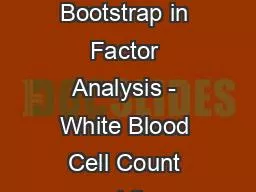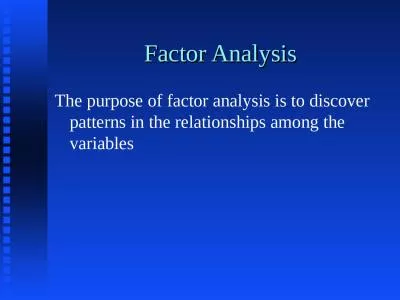PPT-Factor Analysis is Your Friend
Author : tatiana-dople | Published Date : 2016-04-11
AnnMaria De Mars PhD The Julia Group amp 7 Generation Games WHY Imagine this What exactly were you planning on doing with that Lets say you have a massive pile
Presentation Embed Code
Download Presentation
Download Presentation The PPT/PDF document "Factor Analysis is Your Friend" is the property of its rightful owner. Permission is granted to download and print the materials on this website for personal, non-commercial use only, and to display it on your personal computer provided you do not modify the materials and that you retain all copyright notices contained in the materials. By downloading content from our website, you accept the terms of this agreement.
Factor Analysis is Your Friend: Transcript
Download Rules Of Document
"Factor Analysis is Your Friend"The content belongs to its owner. You may download and print it for personal use, without modification, and keep all copyright notices. By downloading, you agree to these terms.
Related Documents














